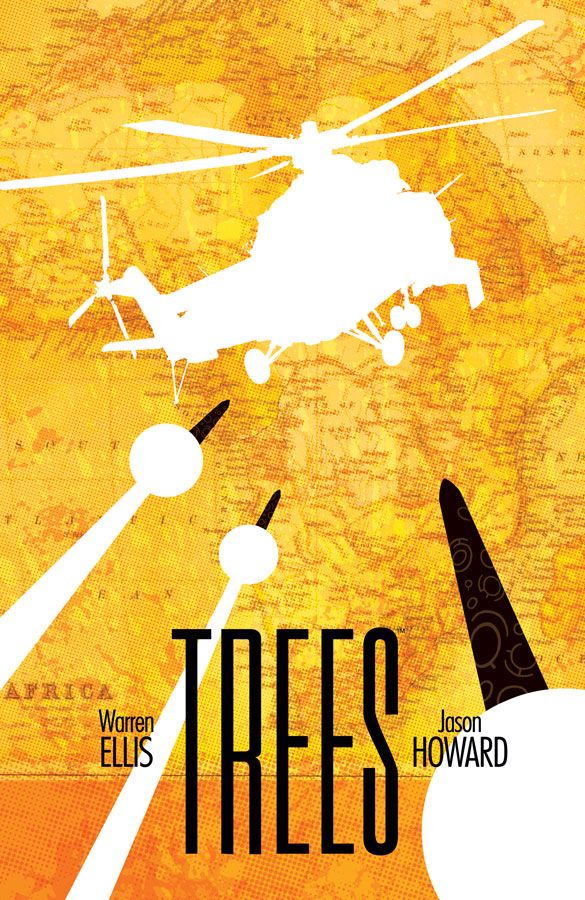In "Trees" #5 by Warren Ellis and Jason Howard, President Caleb Rahim dares to use trees as props in war, while the in Arctic, Marsh's curiosity and paranoia turns out to be well-founded.
The action of "Trees" sometimes feels glacially slow, or rather arboreal-ly slow, but that's one of the pleasures of Warren's plotting, how he's playing with the conventions of alien invasion stories. There's a lot going on, and five issues in, "Trees" feels rich in possibilities and dense with activity. Ellis doesn't just pay lip service to the scope of a global story, an ambitious challenge for any writer. It's still early, so Ellis hasn't developed his various settings equally yet. The characters in China and Norway feel colorful but flat, like snapshots or music videos. While all the characters are distinctive and interesting, almost none of them have enough depth yet to create strong emotional response in the reader.
The exception is the characters in Cefalù. The scene between Eligia and Luca has teeth. Howard's use of shadows and subtle facial expressions are superb in this scene of talking heads in a creepy place. Luca obliquely talks about Aleister Crowley's crimes and exploits, as if in warning. Eligia's suspicions always lie in the more salacious or physical direction, since she's used to being valued that way, but she's reading Luca entirely wrong and underestimating him. He intends to exploit her, but for strategy in a larger political situation rather than sexual gain, and she can't see it yet. It remains to be seen if he is underestimating her. For the last panel with Luca, Howard draws a sudden hardness and sharpening in Luca's gaze. The facial expression is all that is necessary, so the sudden darkness around Luca is overdone, but the pacing is just right.
Save for Cefalù, though, the story feels more cerebral than visceral, and this lessens the impact of plot tension and suspense. It's most noticeable in the action in the Arctic when Marsh's status is revealed. Howard's transition into the big moment unfortunately also underplays the shock, probably unintentionally. Part of this misstep is in the page composition, panel composition and pacing. The camera angle is too remote from the tableau, and the coloring also has a distancing effect. Howard's use of lavender and magenta actively works against the content, because it makes the scene look artificial.
With the exception of the climatic discovery of Marsh, the colors don't complete with his line. His color choices, mostly monotone transitions of cool and neutral hues, create mood and reinforce the boundaries between scenes and settings. In the scene with Adamski and Jo immediately prior to the climax, the blues and greens are attractive and work well with the action, but it's also clear that Howard isn't prioritizing color in his toolbox.
What Howard does prioritize is the artistic risk he takes with depicting physical representations of non-visual sensations. The symbols indicating radio frequency interference feel abstract yet pervasive, and the shift into light green signals a shift into an audio disturbance. The looming heads are beautifully drawn and convey the menace of the "crying sound" so eloquently.
In "Trees" #5, Ellis and Howard's seeds of world-building and slow intrigue are flowering and bearing fruit. Their risk-taking and ambition continue to flesh out a story that defies expectations and predictability, in a way that will reward readers who can stay committed for what will hopefully be a long haul.

